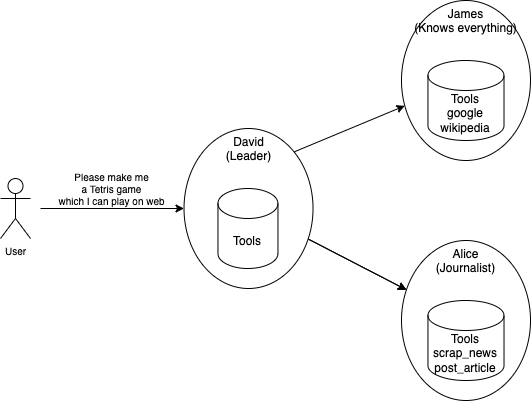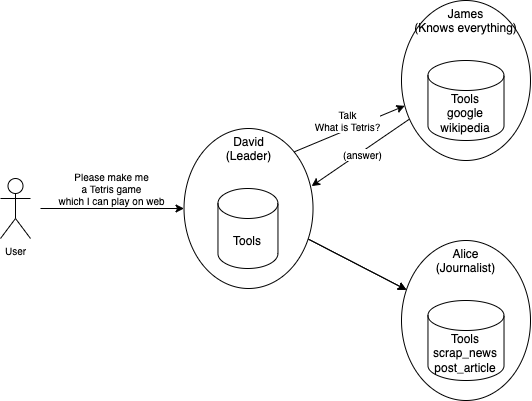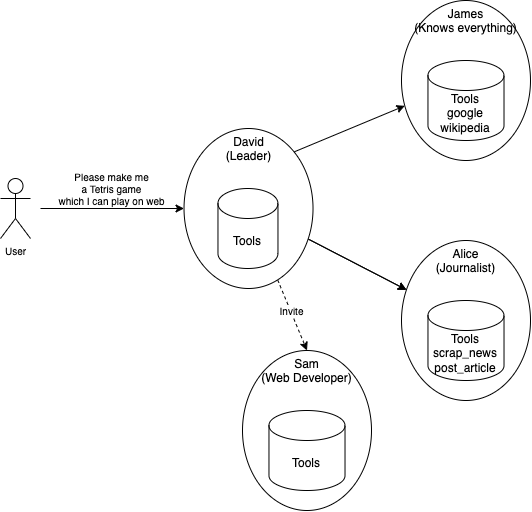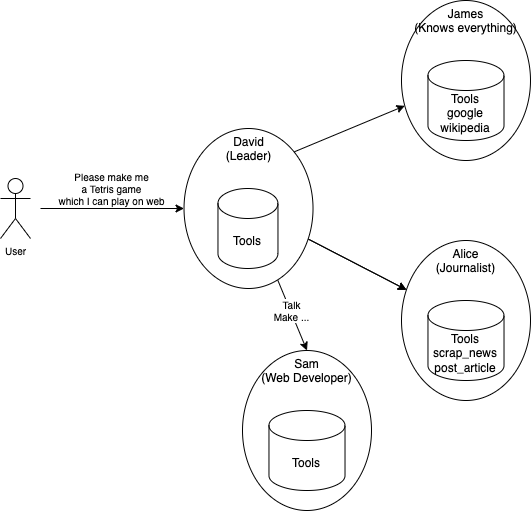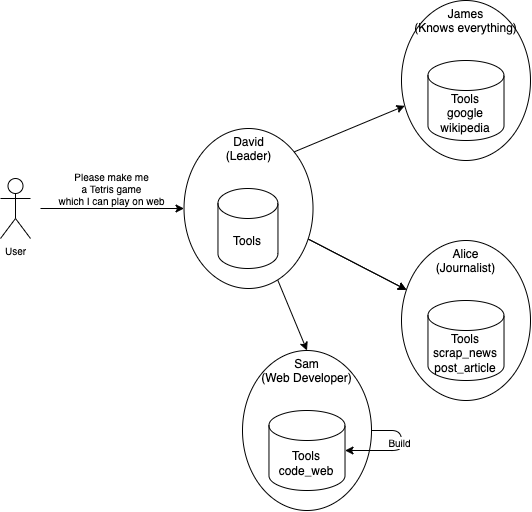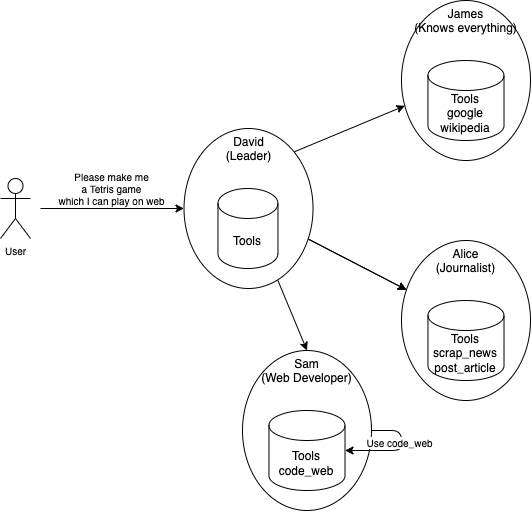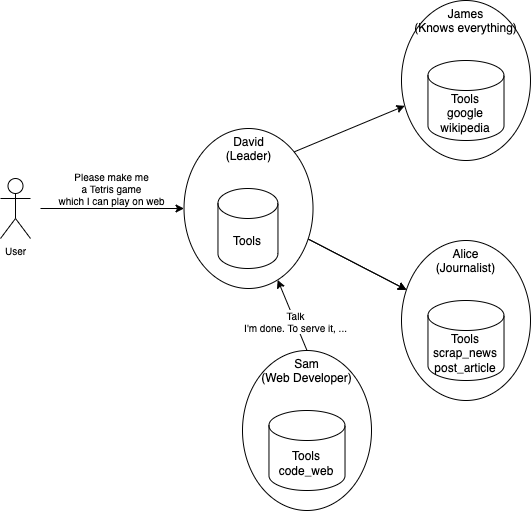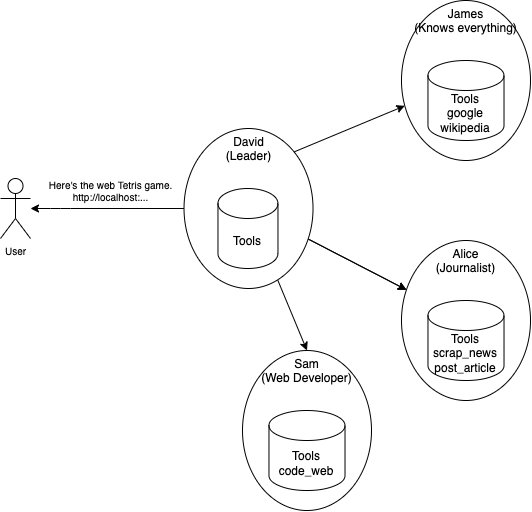AIvilization (Artificial Civilization)
Quick Start
Set .env.
OPENAI_API_KEY=sk-EXAMPLE
LOG_LEVEL=DEBUG
PINECONE_API_KEY=ad3787cc-EXAMPLE (optional)Run this command.
poetry install
poetry run start
Structure
Person
Here's the brief diagram of the Person. It consists of a Brain, Friends (list of Person) and Tools (list of Tool). Person can take one of 4 actions: invite, talk, build and use. Brain determines which action to take and provides parameters for the action.
- Invite
- Invite a new person to the civilization and be friends with them.
- When a person invites another, they gives them a personality and tools.
- Talk
- Talk to a friend.
- They can ask something to do, notice something, or just talk.
- Build
- Build a new tool.
- Code something as a tool.
- Use
- Use a tool.
Brain
Brain consists of Organize, Memory and LLM. Organize is basically a prompt formatter. It makes a prompt for the LLM input. There are 4 kinds of Organize in a Brain: Planner, Optimizer, Executor and Reviewer. Planner generates plans, which is a list of action types and objectives. Optimizer checks the plans and determines to approve or reject them. If they're rejected, Planner makes new plans, reflecting the Optimizer's opinion. After approval of the plans, Executor makes detailed parameters of the actions. Once these are approved by Reviewer, they are executed in deterministic manner, while the plans from Planner is abstract and undeterministic.
Memory and LLM are used through out this whole process.
Civilization
There are two persons in the civilization initially. One is the leader, and the other is user. The user talks to the leader, with UI (CLI prompt is available currently). The leader will invite a new person if it's necessary. Participants can talk to each other, build tools and use them. This process is repeated recursively until the leader reponds to the user with the final answer.
Here's a simple example.


